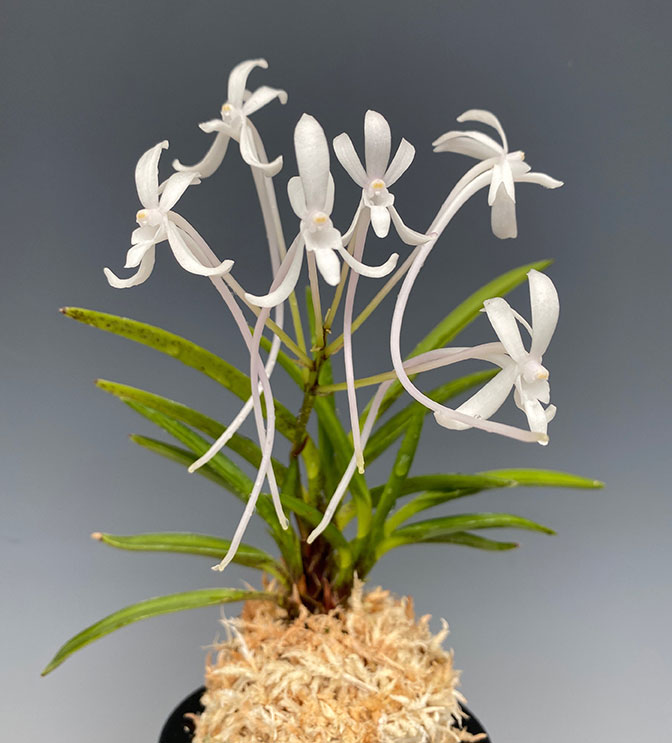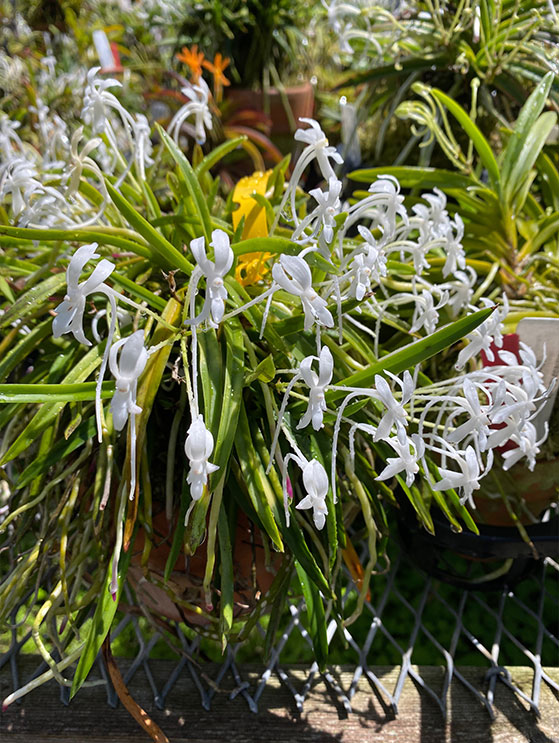A breeze from Amami Island
Posted by Jason Fischer on Jul 14, 2020
The plant featured in this blog is also shown in this video of Jason Fischer going through his Neofinetia collection in July 2020 (Amami can be seen at 0:17 and 4:37 timecode):
Hello all! It has been a very busy season for us and I apologize for taking so long to update you on our Neofinetia plants! Coronavirus has halted shipments from Japan, but luckily, we are able to work with Korea for new imports soon, so keep checking for new listings.
Since this year I am late in the season to write about Neofinetia, I’d like to highlight the variety that also blooms late into the season, which is the Amami Island variety of Neofinetia. Amami Island is a tropical island in Japan, just north of Okinawa. It is known for its lush mountains, low population (110,000) and heavy rain fall. The rainfall is strongest in May, June and September. Typically, Neofinetia bloom during the rainy season. Perhaps this is why we see some Amami Island bloom into the fall, given they get one last bout of heavy rainfall in the wild in September.

Neofinetia falcata 'Amami Island Type'
The Amami Neos are big plants, with big flowers. In fact, they are the biggest of all the Neofinetia. It makes sense. Warmer, more tropical climates produce larger foliage plants. Some of the largest Amami specimen plants have reached a foot across in leaf span, and the flowers can be more than double the size of almost any other Neofinetia. They have the classic white flower Neos are well known for, but also can come with a hint of pink. The spurs, or nectaries, are for a moth to pollinate, and since moths are mostly nocturnal insects, once the sun goes down the fragrance of the Neofinetia falcata intensifies. It is truly a fragrance to enjoy and has a scent reminiscent of jasmine, or piña colada. There is a saying by Rupert Holmes, “If you like piña colada, you’ll love Neofinetia falcata”, or something similar to that.
These plants are really great growers. They seem to grow in any media you throw at them, as long as it allows air flow. After all, these are nick-named the ‘Wind Orchid’ in East Asia. Sphagnum moss (standard or traditional moss mound), orchid bark mixes, coco husk and even straight charcoal are all media we have had success growing them in. They can also be mounted on slabs or grown in a Vanda basket if your humidity is high and you water often (I have seen this done in Florida and Hawaii). The other great thing about these plants is that they seem to be able to grow anywhere, provided you don’t let them go below freezing. If your evenings are going to drop below 40 degrees Fahrenheit, I’d say bring them in for the winter season until you have nights 50 degrees or warmer again. The key to growing these is keep them moist when it’s warm, but let them dry when it’s cool.

Specimen size Neofinetia falcata 'Amami Island Type'
I list these available in spike when I see them pop up here and there throughout the summer, and they seem to move quickly. If you order in July, even if they are not listed ‘in spike’, there is still a good chance it will produce a spike and flower between August and September. These plants are an annual bloomer, and we only get to see them in the summer to fall months each year. That just makes it all the more special to experience growing a Neofinetia. What’s more is that they are attractive foliage plants, and can be pleasing to look at even if there are no flowers.
This is a must-have orchid for all plant lovers across the board. It is hard to go wrong with a species orchid plant that has history, good looks and great fragrance!
View our Neofinetia falcata 'Amami Island Type' 奄美 - Extra Large Flower Form product page.
View our current Neofinetia selection.
Happy growing!
Jason Fischer